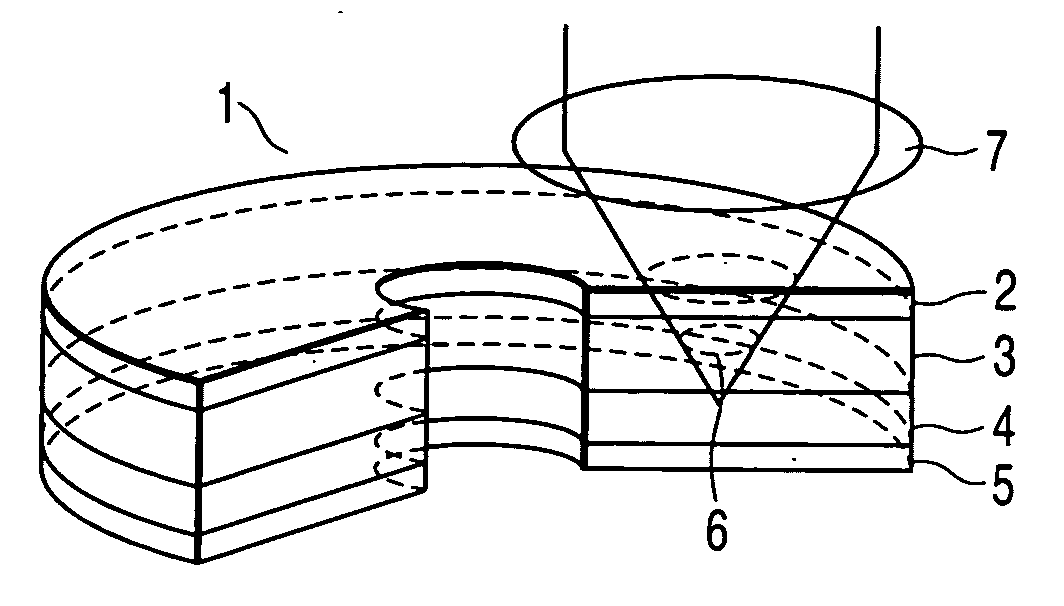Method for optical recording, method for optical reproducing, optical recording medium, and optical recording and reproducing apparatus utilizing holography
a technology of optical recording and reproducing beam, applied in the field of optical recording, can solve the problems of spatial modulation reference beam complicating recorded interference patterns, method is not resistant to wavelength variation between recording beam and reproducing beam, and the diffraction beam is not obtained, so as to reduce the wavelength shift
- Summary
- Abstract
- Description
- Claims
- Application Information
AI Technical Summary
Benefits of technology
Problems solved by technology
Method used
Image
Examples
examples
[0107] In the present example, the reflective optical recording media 1 shown in FIG. 1 was prepared.
(Production of Transparent Substrate)
[0108] First, a master disk was produced as described below. A disk-shaped glass substrate was spin-coated with an electron-beam resist. An electron-beam drawing apparatus was used to draw a pattern of tracks and a pattern of wavelength reference marks on the electron resist. The tracks constitute concentric circles. The wavelength reference marks are provided in four regions of the disk at intervals of n / 4 and extend in a direction orthogonal to the tracks. Each region in which the wavelength reference marks are provided has a length of 50 μm along the track. After the electron-beam drawing, a development step, a nickel sputtering step, and a nickel plating step were performed to obtain a master disk. Then, polycarbonate was injected and molded using the master disk obtained, to provide a transparent substrate 4 shown in FIG. 1, which was used...
PUM
 Login to View More
Login to View More Abstract
Description
Claims
Application Information
 Login to View More
Login to View More - R&D
- Intellectual Property
- Life Sciences
- Materials
- Tech Scout
- Unparalleled Data Quality
- Higher Quality Content
- 60% Fewer Hallucinations
Browse by: Latest US Patents, China's latest patents, Technical Efficacy Thesaurus, Application Domain, Technology Topic, Popular Technical Reports.
© 2025 PatSnap. All rights reserved.Legal|Privacy policy|Modern Slavery Act Transparency Statement|Sitemap|About US| Contact US: help@patsnap.com



